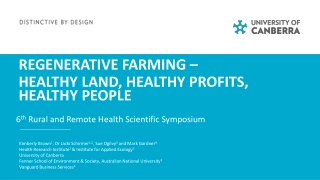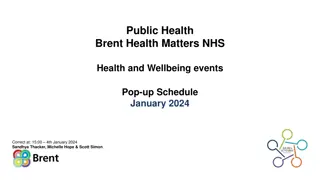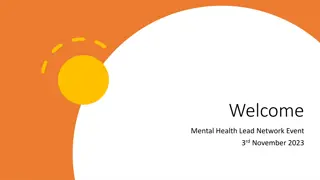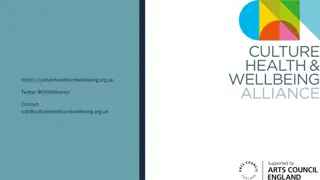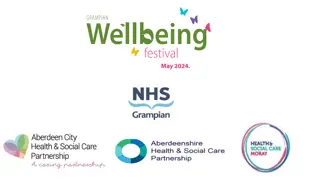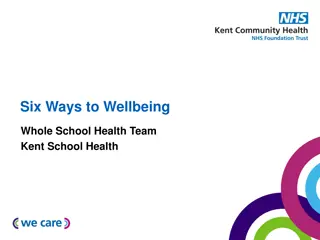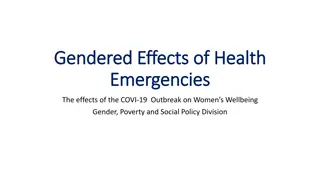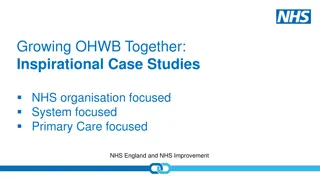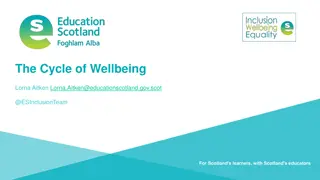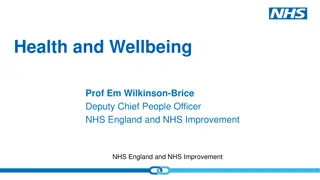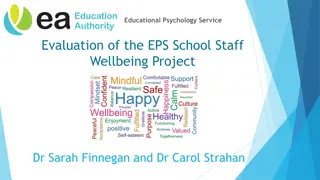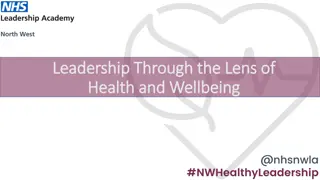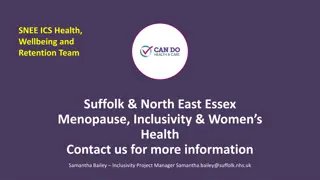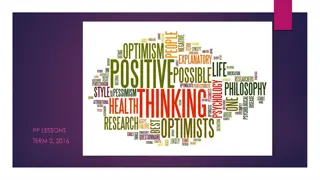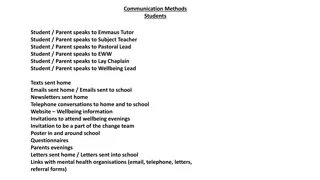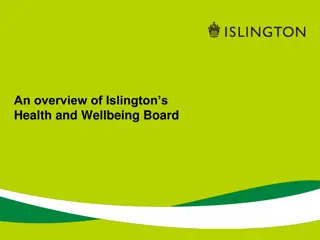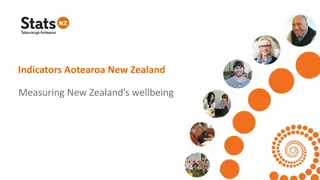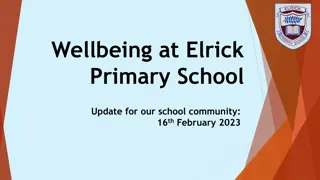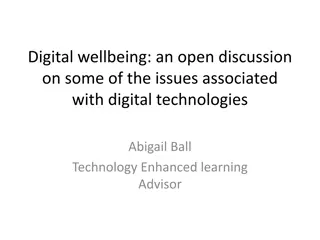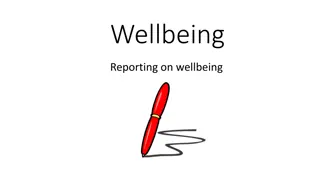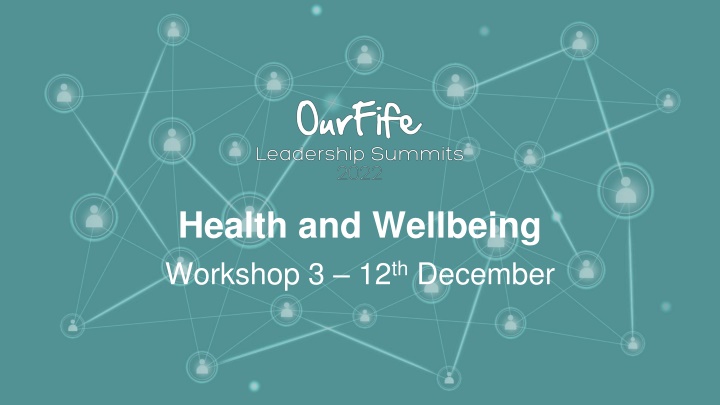
Enhancing Health and Wellbeing Initiatives
This workshop series focuses on increasing physical activity and social connectedness through a systems-based approach, targeting areas like active places, spaces, and workplaces. It aims to bridge existing gaps, address challenges related to staff recruitment and wellbeing, and improve community engagement for a more active population.
Download Presentation

Please find below an Image/Link to download the presentation.
The content on the website is provided AS IS for your information and personal use only. It may not be sold, licensed, or shared on other websites without obtaining consent from the author. If you encounter any issues during the download, it is possible that the publisher has removed the file from their server.
You are allowed to download the files provided on this website for personal or commercial use, subject to the condition that they are used lawfully. All files are the property of their respective owners.
The content on the website is provided AS IS for your information and personal use only. It may not be sold, licensed, or shared on other websites without obtaining consent from the author.
E N D
Presentation Transcript
Health and Wellbeing Workshop 3 12thDecember
Where we got to in workshop 1 Shared endeavour: to increase physical activity, with social connectedness (by working across organisations) NB issues around food and income inequalities are also critical and interdependent
Where we got to in workshop 2 the case for physical activity learning from local innovations a systems-based approach
A reminder the systems approach moves away from short-term, solitary interventions and shifts our thinking towards strategic cross-sectoral efforts that work in a complementary way to maximise limited resources and increase population levels of physical activity. (Public Health Scotland)
Our chosen areas of focus Active places and spaces Active workplace Sport and active recreation We acknowledged that these areas are also critical and should be taken forward in future work: Active health and social care Active travel
Our desired state Neighbourhood design that encourages activity and connection Better use of our green spaces Organisations with wellbeing at core (recruitment, staff support, work practices) Targeted interventions (least active / inequalities / transition points) while achieving a shift across the population Connected community connectors and clear communication Physical activity taken seriously impact understood Work taken forward across the system Continued collaborative leadership, inclusion of missing voices
Our current state Disconnect between different parts of the system Potential to do more to open up our green spaces Challenges around staff recruitment, absence, wellbeing Lack of data / understanding of our most inactive Existing opportunities not coordinated or communicated clearly Physical activity seen as the poor relation Immediate operational pressures, concerns around budgets/risks
Learning from local clear focus, shared commitment supported and supportive leadership strong architecture , accountability credible data building on community voice multi-disciplinary teams focused around place genuine empowerment of staff and communities challenging old ways of working giving time, and allowing for failures and adaptations
Case studies Healthier Fleetwood Creating a healthier community (not just treating illnesses) Building connection, confidence, control Newham Community Health Champions Put power in the hands of the community Be honest Activities for people to come together and become doers (rather than done to) Respond on the community s timeline, not the Council s timeline Shared commitment across partners Trust and earn trust Results: Meet people where they are not where the system / officials are improvements in mental / physical health reduction in mental health prescriptions Connect into policy and practice share what we hear reduction in use of services - 20% reduction in A&E attendances over 2 years Share information that Champions can use but don t tell Champions what to do
Summit masterclasses https://our.fife.scot/leadership Prof. Catherine Needham Author of 21st Century Public Servant emphasised the power of common purpose and the leadership skills needed to support successful service redesign and whole system change Adam Lent & Jessica Studdert New Local, The Community Paradigm & Community Power Evidence Base set out the case for a fundamental shift in how public services work to share power with people rather than hoard it. Provided the evidence of the 6 benefits of community powered approaches. Chris Naylor London Borough of Barking & Dagenham, Community Solutions promoted a go big or go home approach. Advocated the issue one of design in public services a structural problem and capability and not necessarily a policy problem. Key to success is using data understand problems and know your residents and having the capability to act in single community focussed directorate / partner arrangement. Alison Trimble The Kings Fund, Leading in Whole Systems Presented the challenges of leading across systems as well as in organisations and communities and the dilemmas of place. Advocated using place to pull together a public service micro-system to discuss and generate new ways of pulling together
Task 1: the design brief what would we need to close the gap? Resources Governance Planning Organisational Design For example For example For example For example Programme Board for physical activity Our green spaces Shared commitment to prioritising physical activity Services and service settings are designed to encourage physical activity Funds pooled and prioritised to target least active and those at life transition points Joint green space strategy Data and evidence from varied sources, including community voices, to help us understand the most inactive 25% Supportive built and social environments
Task 2: our recommendations For each of the 4 aspects of the design brief what are the 3 reforms / actions we need Fife Partnership to work towards?

